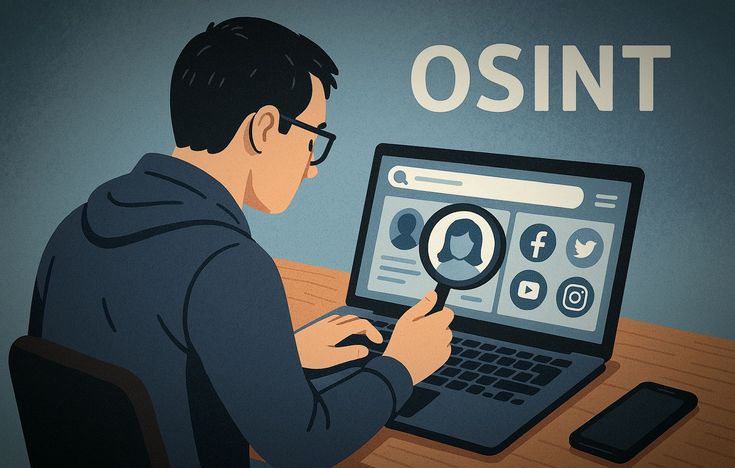OSINT Bellingcat: Revolutionizing Intelligence Gathering
In today’s interconnected world, Open-Source Intelligence (OSINT) has become a cornerstone of modern intelligence operations. Organizations like Bellingcat have redefined how intelligence is gathered, analyzed, and disseminated, particularly in regions like the Middle East, where geopolitical tensions and complex conflicts demand timely and accurate information. This article explores Bellingcat’s impact on OSINT and how tools like those provided by Knowlesys empower intelligence professionals to address pressing issues in the U.S. and Middle East intelligence communities.
Bellingcat: Pioneering OSINT Investigations
Bellingcat, founded in 2014 by Eliot Higgins, has emerged as a global leader in OSINT by leveraging publicly available data to investigate conflicts, human rights abuses, and disinformation campaigns. From uncovering details about the downing of MH17 to exposing chemical weapons use in Syria, Bellingcat’s methodology—combining satellite imagery, social media analysis, and geolocation—has set a new standard for transparency and accountability in intelligence work.
For the U.S. and Middle East intelligence communities, Bellingcat’s work is particularly relevant. The Middle East, with ongoing conflicts in Syria, Yemen, and Iraq, presents a challenging environment where traditional intelligence methods often fall short. Bellingcat’s ability to rapidly analyze open-source data provides actionable insights into terrorist activities, state-sponsored operations, and regional power dynamics.
Key Issues in U.S. and Middle East Intelligence
The intelligence communities in the U.S. and Middle East are grappling with several critical challenges:
- Disinformation and Propaganda: The spread of misinformation on social media platforms complicates efforts to discern credible threats. For example, Iran and non-state actors like ISIS have used digital platforms to propagate narratives that destabilize the region.
- Terrorist Financing and Networks: Tracking illicit financial flows and cross-border networks remains a priority, especially with groups like Hezbollah leveraging cryptocurrencies and dark web marketplaces.
- Geopolitical Shifts: The Abraham Accords and evolving U.S.-Iran relations have reshaped alliances, requiring real-time monitoring of diplomatic and military developments.
- Cyber Threats: State-sponsored cyberattacks, such as those attributed to Iran against U.S. infrastructure, demand sophisticated OSINT tools to trace digital footprints.
Bellingcat’s open-source investigations have directly addressed these issues, such as their work tracking Russian and Iranian disinformation campaigns or analyzing drone strikes in Yemen. Their collaborative approach, often involving global volunteers, demonstrates the power of crowdsourced intelligence in tackling complex problems.
Knowlesys: Enhancing OSINT Capabilities
While Bellingcat showcases the potential of OSINT, tools like those offered by Knowlesys provide the technological backbone for intelligence professionals to replicate and scale these efforts. Knowlesys specializes in OSINT monitoring systems that enable real-time data collection, analysis, and visualization from diverse sources, including social media, news outlets, and public records.
For instance, Knowlesys’ platforms can monitor social media chatter in the Middle East to identify emerging threats or track financial transactions linked to terrorist organizations. Their systems integrate advanced analytics, such as sentiment analysis and network mapping, which are crucial for understanding the intricate relationships between state and non-state actors. By automating data collection and providing actionable insights, Knowlesys empowers intelligence agencies to stay ahead of rapidly evolving threats.
Why OSINT Matters Now
The U.S. intelligence community, including agencies like the CIA and DIA, increasingly relies on OSINT to complement classified intelligence. In the Middle East, where access to on-the-ground sources can be limited, OSINT fills critical gaps. For example, Bellingcat’s analysis of satellite imagery has corroborated reports of civilian casualties in U.S. airstrikes, influencing policy discussions on military transparency.
Similarly, Middle Eastern intelligence agencies, such as those in Israel and Saudi Arabia, use OSINT to monitor regional adversaries. The ability to analyze open-source data in real time—whether it’s a viral video of a protest in Tehran or a leaked document on Telegram—provides a strategic advantage in a volatile region.
The Future of OSINT with Knowlesys
As OSINT continues to evolve, tools like Knowlesys’ monitoring systems will play a pivotal role in shaping the future of intelligence gathering. By integrating artificial intelligence and machine learning, Knowlesys enhances the speed and accuracy of data analysis, allowing intelligence professionals to focus on strategic decision-making. For example, predictive analytics can flag potential flashpoints in the Middle East, enabling proactive responses to crises.
Moreover, Knowlesys’ commitment to user-friendly interfaces ensures that even non-technical analysts can leverage OSINT effectively. This democratization of intelligence tools aligns with Bellingcat’s ethos of making information accessible and actionable for a global audience.
In conclusion, Bellingcat’s groundbreaking work in OSINT has transformed how intelligence is gathered and shared, particularly in addressing the complex challenges facing the U.S. and Middle East intelligence communities. By combining Bellingcat’s investigative techniques with advanced tools like those from Knowlesys, intelligence professionals can navigate the digital landscape with unprecedented precision. As threats evolve, OSINT will remain a vital asset in safeguarding national security and promoting global stability.
